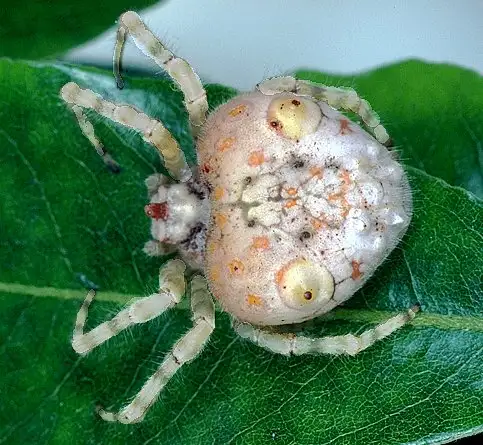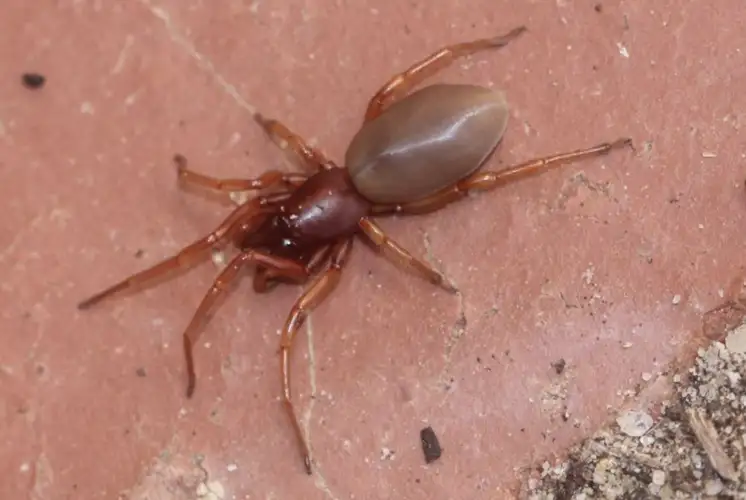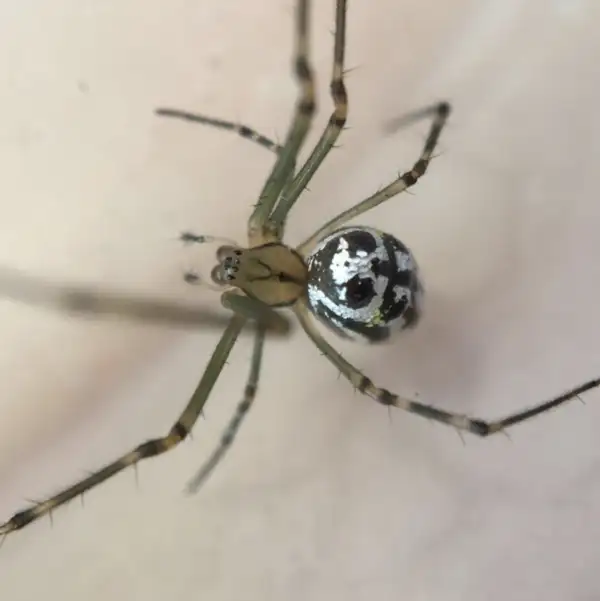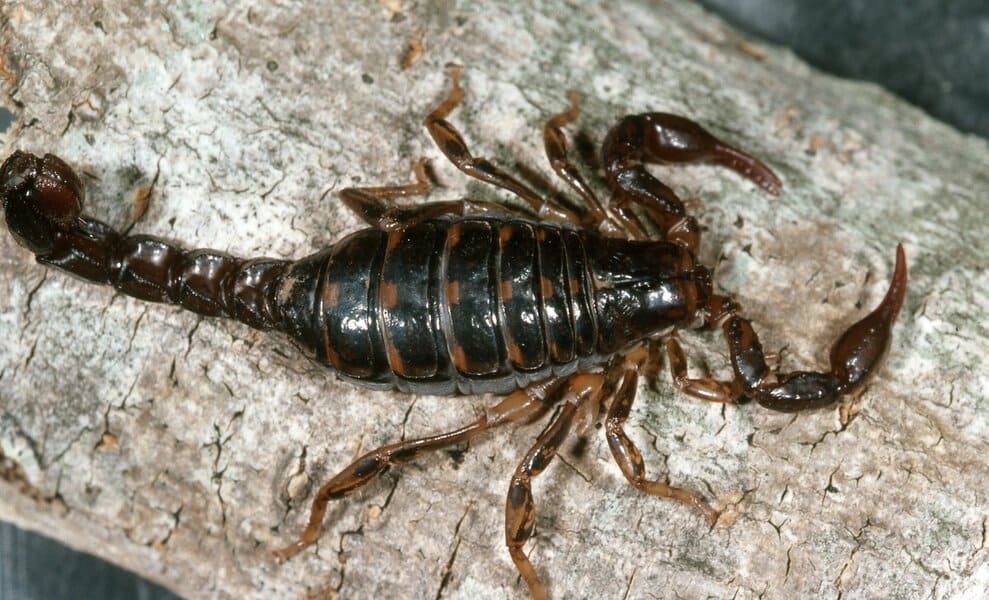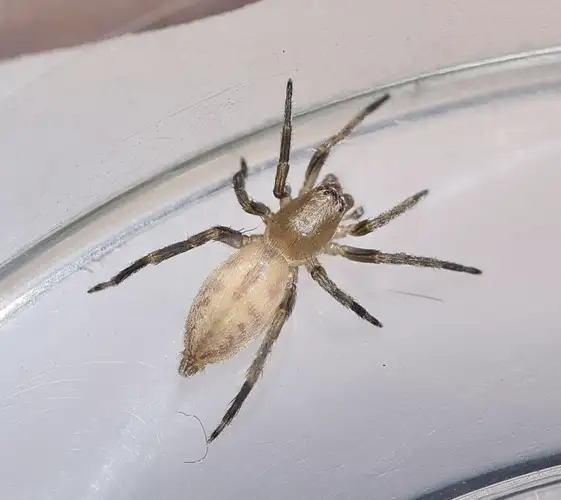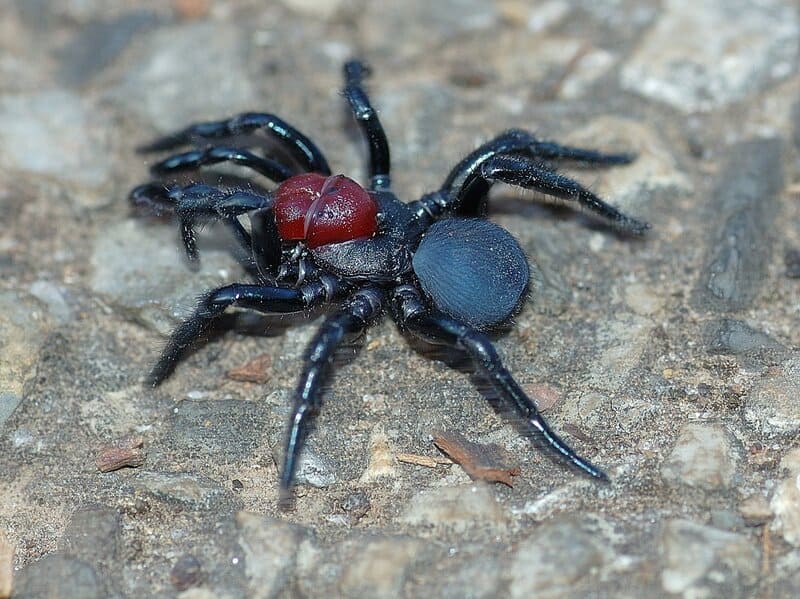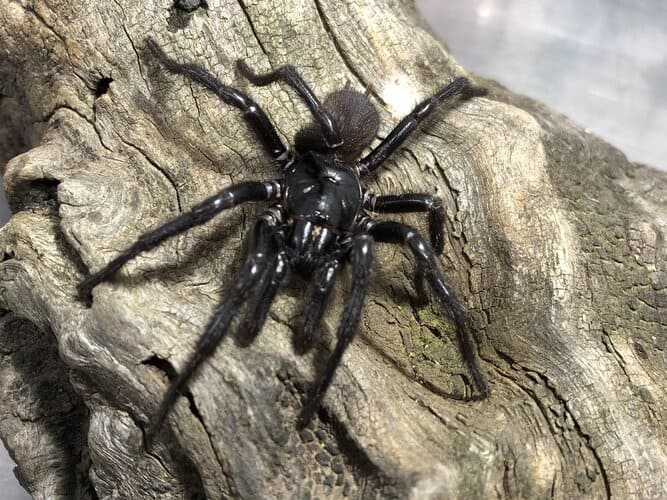Magnificent Spider
IUCN
Not evaluatedBasic Information
Scientific classification
- name:Magnificent Spider
- Scientific Name:Ordgarius magnificus
- Outline:Arthropoda
- Family:Araneidae Ordgarius
Vital signs
- length:Females about 10–14 mm; males only 1–2 mm
- Weight:Light; on the order of tens to a hundred milligrams for adult females
- lifetime:Estimated around 1 year, spanning at least one breeding season
Feature
Bolas spider using a sticky droplet and moth pheromone mimicry; extreme female–male size difference.
Distribution and Habitat
Forests and woodland along Australia’s east coast, mainly in trees and tall shrubs above about 2 m from the ground.
Appearance
Creamy-white females with pink and yellow abdominal spots and a crown of white and reddish tubercles; body nearly as wide as long.
Details
The Magnificent Spider (Ordgarius magnificus) is a striking bolas spider in the familyAraneidae, found in forests along the east coast of Australia. Instead of spinning a typical orb web, the female uses a single silk line with a sticky globule — a “bolas” — to snare moths attracted by a chemical lure.
Basic Biology
Scientific name: Ordgarius magnificus
Family & genus: Araneidae, genus Ordgarius
Size: Females up to about 10–14 mm long and almost as wide; males tiny at only 1–2 mm.
Longevity: Thought to be around 1 year, spanning at least one breeding season.
Appearance
Female Magnificent Spiders are creamy white with a delicate pattern of pink and yellow spots on the abdomen and a crown of white and reddish tubercles on the cephalothorax. The body is nearly as wide as it is long, giving a plump, rounded appearance, and the legs are relatively short compared with many other orb-weavers, well suited to hanging quietly among foliage.
Distribution & Habitat
This species is endemic to eastern Australia, where it occurs in forest and woodland along the east coast. Spiders are usually found in trees or tall shrubs, rarely less than about 2 m above the ground. By day they hide in a retreat made from rolled leaves and silk; at night they hunt in more open spaces among the branches.
The Bolas Hunting Technique
As a bolas spider, the Magnificent Spider has a remarkable hunting method. At night the female constructs a short “trapeze” line between twigs, suspends herself from it, and then spins a single line of silk ending in a large sticky droplet — the bolas.
She releases airborne chemicals that mimic the sex pheromones of certain female moths. Male moths, drawn in by the scent, fly towards the spider. Sensitive hairs on the spider’s legs detect the wing beats of an approaching moth. The spider then swings the bolas in a circle beneath the moth until the droplet strikes and sticks to it. The tethered moth is hauled in, bitten, wrapped and either eaten at once or stored for later.
Egg Sacs & Life Cycle
Females produce several large, brown, spindle-shaped egg sacs among the foliage, each up to about 5 cm long and containing hundreds of eggs. A single female can make multiple sacs in a season, helping ensure many offspring reach maturity.
Venom & Human Interactions
Like other araneid spiders, the Magnificent Spider uses venom to subdue insect prey. However, it is small, nocturnal and lives high in vegetation, so contact with people is rare. It is not regarded as dangerous to humans, and there are no reports of serious medical effects from bites. Observing it from a distance is safe and offers a fascinating glimpse into one of the most specialized hunting strategies among spiders.
FAQ
Q1. Is the Magnificent Spider dangerous to humans?
No. It is not considered medically significant. Encounters are rare, and any bite to a healthy adult would likely be minor.
Q2. Why is it called the “Magnificent” Spider?
The name refers to its ornate colour pattern and distinctive body shape, as well as its remarkable bolas-style hunting behaviour.
Q3. Does it build a normal orb web?
Females do not spin a full orb web to catch prey. Instead they use a single silk line with a sticky droplet — the bolas — to snare moths.
Q4. Where am I most likely to see one?
In suitable forest or wooded habitat along Australia’s east coast, usually at night, high in trees or tall shrubs where clusters of large,
brown egg sacs may reveal their presence.

